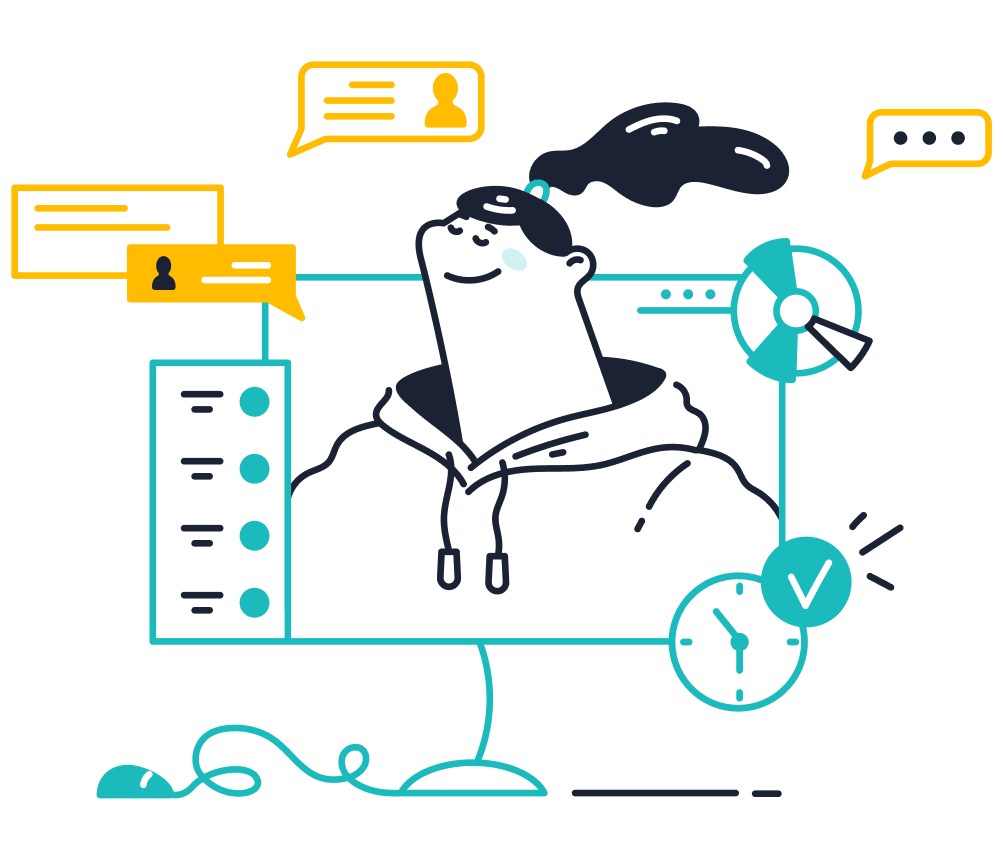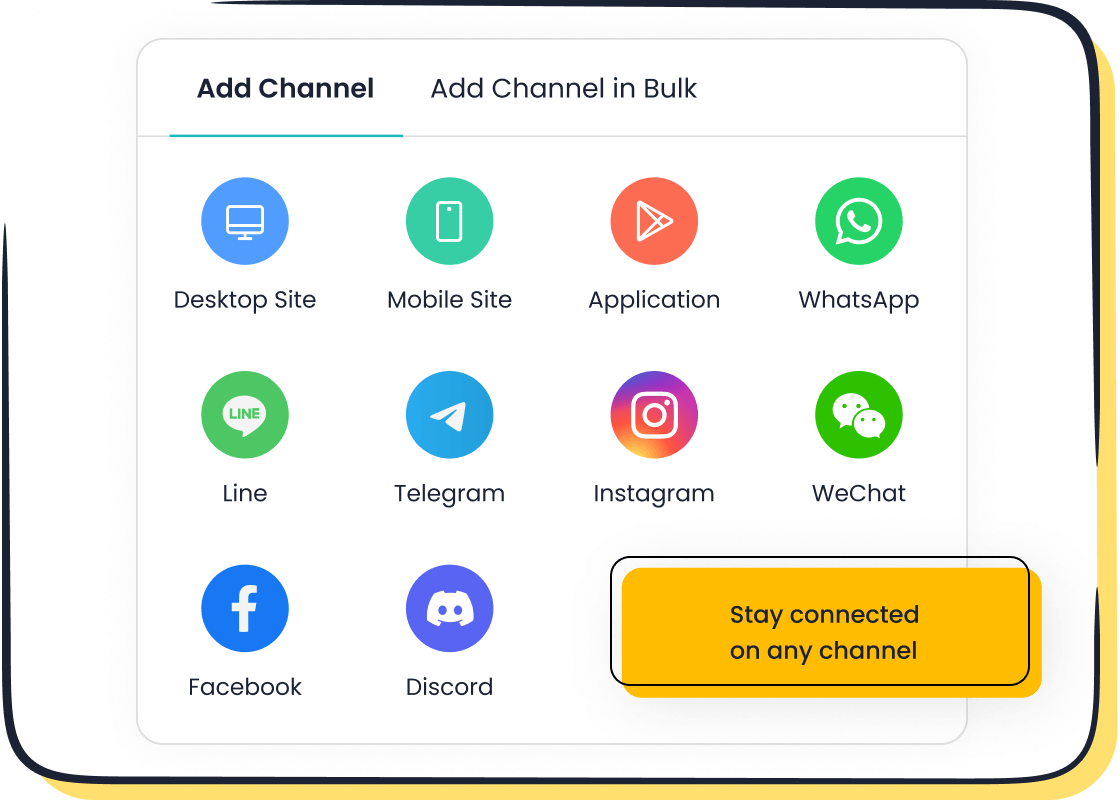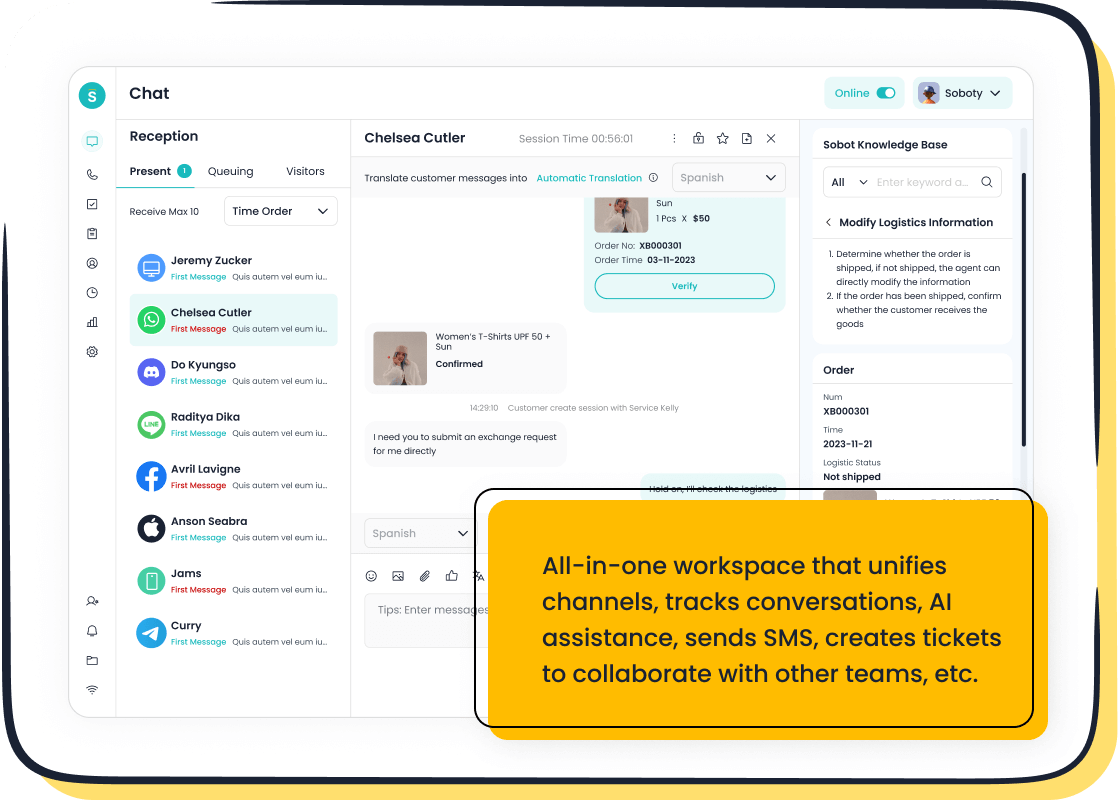What Sets Email and Chat Support Apart

When it comes to customer support, email and chat support are two of the most popular options. Each has its own strengths, making them valuable tools for businesses. Did you know that 93% of customers prefer email for its accessibility, while live chat boasts an impressive 85% satisfaction rating? These numbers highlight how different channels meet different needs.
Email works best for detailed inquiries, like technical issues or identity verification, where a written record is essential. On the other hand, live chat shines when customers need quick answers, especially for billing or account questions. Younger audiences often lean toward chat for its speed and convenience.

With tools like Sobot Live Chat, businesses can offer real-time assistance while maintaining efficiency. Whether you're resolving a complex issue or answering a quick question, choosing the right channel can make all the difference in customer satisfaction.
Benefits of Email Support
Flexibility and Convenience
Customers can respond at their own pace, making it ideal for non-urgent inquiries.
Email support gives you the freedom to respond when it’s convenient. Unlike live chat, you don’t have to stay glued to your screen waiting for a reply. This makes email perfect for non-urgent issues, like asking about product details or requesting a refund. Plus, email is universal. Almost everyone has an email address, so it’s easy to connect with businesses. Whether you’re at home or on the go, email ensures you can communicate on your terms.
Email support is accessible across time zones without requiring immediate availability.
One of the biggest benefits of email is its accessibility. It works seamlessly across time zones, making it a great option for global customer support. You can send an email anytime, and businesses can reply promptly without needing to be online 24/7. This flexibility reduces wait times and keeps communication efficient. For example, if you’re in New York and the company is in Singapore, email bridges the gap effortlessly.
Detailed and Documented Communication
Enables comprehensive responses with attachments like screenshots or documents.
Email support allows you to share detailed information. Need to explain a technical issue? You can attach screenshots, invoices, or even videos to make your point clear. This level of detail helps businesses understand your problem better and provide accurate solutions. For instance, if you’re troubleshooting a device, attaching a photo of the error message can save time and avoid confusion.
Provides a written record for tracking and future reference.

Another advantage of email is the written record it creates. Every conversation is saved, so you can refer back to it whenever needed. This is especially helpful for tracking order updates or resolving disputes. Businesses also benefit from this documentation, as it helps them maintain consistency in customer support. With tools like Sobot’s Ticketing System, companies can organize and retrieve these records effortlessly.
Scalability for Businesses
Handles high volumes of inquiries efficiently with automation.
Email support scales easily for businesses. Automation tools can handle repetitive tasks, like sending order confirmations or answering FAQs. This reduces the workload for human agents and speeds up response times. For example, chatbots can reply to common questions, while generative AI provides real-time suggestions for personalized responses. These strategies ensure businesses can manage high inquiry volumes without compromising quality.
Tools like Sobot's Ticketing System streamline email support workflows.
Sobot’s Ticketing System takes email support to the next level. It automates workflows, prioritizes inquiries, and ensures no email slips through the cracks. By integrating with other systems, it provides agents with all the information they need in one place. This streamlining not only improves efficiency but also enhances the overall customer experience. Whether you’re a small business or a global brand, tools like this make scaling email support a breeze.
Benefits of Live Chat Support
Real-Time Interaction
Instant responses enhance customer satisfaction and reduce wait times.
Live chat support offers you the convenience of immediate response. Unlike email, where you might wait hours, live chat connects you with an agent in just a couple of minutes. In fact, live chat averages a response time of 2 minutes, compared to email’s 12 hours. This speed makes it perfect for quick questions, like checking product availability or clarifying shipping details. Plus, 59% of customers are more likely to make a purchase when their queries are answered in under a minute. With live chat, you get practical solutions without the frustration of long waits, boosting your overall satisfaction.
Ideal for resolving simple issues quickly and efficiently.
When you need help with straightforward problems, live chat is your go-to option. Whether it’s resetting a password or tracking an order, the real-time nature of chat ensures you get answers fast. Agents can troubleshoot on the spot, ask follow-up questions, and guide you step-by-step. This seamless interaction mimics a real conversation, making it easier to resolve issues without back-and-forth emails. It’s efficient, effective, and keeps your day moving smoothly.
Personalization and Engagement
Agents can provide tailored assistance in real time, fostering stronger relationships.
Live chat isn’t just about speed—it’s also about making you feel valued. Agents can personalize their responses based on your preferences and past interactions. For example, they might say, “Hi! I see you’re browsing our skincare products. Can I recommend a moisturizer that pairs well with the serum you’re viewing?” This personal touch builds trust and makes you more likely to return. When you feel understood, you’re not just a customer—you’re part of a relationship that encourages loyalty.
Sobot Live Chat's AI tools enable precise profiling and personalized service.

Sobot Live Chat takes personalization to the next level. Its AI tools analyze your behavior, preferences, and history to offer tailored recommendations. For instance, if you’re exploring cameras, the system might suggest popular lenses that other customers love. This precise profiling doesn’t just enhance your experience—it also helps businesses convert visitors into loyal clients. With Sobot Live Chat, you get assistance that feels uniquely crafted for you.
Proactive Support Opportunities
Chatbots can initiate conversations to assist users, reducing cart abandonment.
Ever hesitated at checkout? Live chat can step in at just the right moment. Chatbots monitor your behavior and initiate conversations when they notice you lingering on a product page or hesitating during payment. They might ask, “Need help with shipping options?” or “Have questions about this product?” This proactive approach addresses your concerns instantly, reducing cart abandonment and improving your shopping experience.
Sobot Live Chat integrates seamlessly with websites and apps for proactive engagement.

Sobot Live Chat doesn’t just wait for you to reach out—it takes the first step. By integrating with websites and apps, it ensures you get help exactly when you need it. Whether you’re browsing on a smartphone or desktop, the system can trigger location-based messages or personalized greetings. This seamless integration keeps you engaged and ensures you never feel lost during your journey. It’s like having a helpful assistant by your side, ready to guide you at every step.
Drawbacks of Each Channel
Limitations of Email Support
Slower response times compared to live chat support.
Email support often takes longer to resolve issues, which can frustrate customers who expect quick answers. A delay of just five minutes can reduce qualification rates by 400%, and 71% of customers believe delayed responses show a lack of care. This can erode trust and loyalty, making customers feel undervalued. While email works well for detailed inquiries, it’s not ideal when speed is critical. Clear communication about expected response times can help manage expectations and reduce dissatisfaction.
May feel impersonal for customers seeking immediate interaction.
When you need urgent help, email can feel distant. Unlike live chat support, email lacks the immediacy of real-time interaction. This can make you feel like your concerns aren’t a priority. For example, if you’re troubleshooting a payment issue, waiting hours for a reply can be frustrating. Businesses can address this by combining email with live chat for a more balanced customer support experience.
Limitations of Live Chat Support
Requires agents to be available in real time, which can strain resources.
Live chat support demands constant monitoring, which can be challenging for smaller teams or businesses operating across time zones. Agents must juggle multiple conversations while maintaining quality. This can lead to burnout or errors. For instance, a business might struggle to provide 24/7 coverage without increasing costs. Tools like Sobot Live Chat help by using AI to handle repetitive queries, reducing the strain on human agents.
Not ideal for lengthy or complex inquiries that require detailed explanations.
Live chat isn’t the best option for solving complicated problems. Without verbal cues, misunderstandings can occur, especially when discussing technical issues. Agents also need to resolve issues quickly, which can make it hard to dive deep into complex topics. As one expert noted, “The absence of verbal cues and tone can sometimes lead to misunderstandings.” For these cases, email support offers a better platform for detailed communication.
Common Challenges for Both
Miscommunication due to lack of tone or context in written communication.
Written communication can sometimes lead to misunderstandings. Without tone or context, messages might come across as harsh or unclear. For example, a casual suggestion could be misinterpreted as a strict directive, causing unnecessary tension. This can break down trust and make future interactions more difficult. Businesses can minimize this by training agents to use clear, empathetic language.
Dependence on technology and stable internet connectivity.
Both email and live chat support rely heavily on technology. A poor internet connection or system outage can disrupt service, leaving customers frustrated. For instance, if a live chat session disconnects mid-conversation, you might have to start over, wasting time. Reliable tools like Sobot’s omnichannel solutions ensure smoother operations by maintaining system stability and minimizing downtime.
Email vs. Live Chat: Choosing the Right Channel for Your Business
Factors to Consider
Nature of customer inquiries (e.g., simple vs. complex, urgent vs. non-urgent)
When deciding between email and chat, the type of customer inquiry plays a big role. Email works best for technical issues or identity verification, where you might need to attach screenshots or documents. It also provides a paper trail, which is helpful for tracking interactions. On the other hand, live chat support is ideal for quick, straightforward questions like checking product availability or resetting a password. If your business deals with non-technical products or caters to younger audiences, chat might be the better fit.
Customer preferences and expectations for response times
Your customers’ preferences matter too. Some people value the flexibility of email, especially if they’re in different time zones or using older devices that don’t support live chat. Others, particularly younger demographics, prefer the instant responses that chat offers. Studies show that 48% of consumers favor companies with proactive live chat support. Understanding these preferences can help you choose the right channel to meet their expectations.
When to Use Email Support
For detailed, non-urgent issues requiring documentation
Email is perfect for situations where you need to explain something in detail. For example, if you’re reporting a technical issue, you can include screenshots or URLs to provide context. This makes it easier for businesses to understand and resolve your problem. Plus, email creates a written record, so you can track what’s been discussed. Tools like Sobot’s Ticketing System make managing these interactions seamless, ensuring no detail gets overlooked.
When customers are in different time zones or prefer asynchronous communication
If your customers are spread across the globe, email is a lifesaver. You can send a message anytime without worrying about time zones. Businesses can use shared platforms like Sobot’s email ticketing system to ensure 24/7 availability. This approach keeps communication smooth and efficient, even when you’re continents apart.
When to Use Live Chat Support
For real-time assistance and quick resolutions during online interactions
Live chat shines when speed is essential. Whether you’re answering a sales question or solving a minor issue, chat provides instant solutions. For example, if a customer is stuck during checkout, live chat support can step in to help immediately. This real-time interaction not only resolves problems faster but also boosts customer satisfaction. In fact, 59% of customers are more likely to buy when their questions are answered quickly.
To engage customers proactively and reduce cart abandonment
Live chat isn’t just reactive—it’s proactive. Chatbots can monitor customer behavior and start conversations when they notice hesitation. For instance, if someone lingers on a product page, the chatbot might ask, “Need help deciding?” This proactive approach reduces cart abandonment and improves the shopping experience. Sobot Live Chat takes this a step further by integrating seamlessly with websites and apps, ensuring you get the help you need, exactly when you need it.
Combining Both Channels
Use email for follow-ups and live chat for initial interactions.
Why choose between email and chat when you can use both? Each channel has its strengths, and combining them creates a seamless customer experience. For instance, live chat works wonders for quick, real-time interactions. It’s perfect for answering simple questions or guiding customers through a purchase. Younger, mobile-driven users especially love the speed and convenience of chat. On the other hand, email shines when you need detailed communication. It’s ideal for technical issues or identity verification, where attaching screenshots or documents is necessary. Plus, email creates a paper trail, making it easier to track interactions.
Here’s how businesses effectively combine these channels:
- Start with live chat for immediate assistance, like answering product questions or resolving minor issues.
- Use email for follow-ups, especially when the issue requires more detail or documentation.
- Leverage email’s cost-effectiveness to maintain communication with a broader audience.
This approach ensures you meet customer needs at every stage of their journey.
Sobot's omnichannel solutions integrate email and chat support seamlessly.

Sobot makes combining email and chat effortless. Its omnichannel solutions unify these platforms into one workspace, so agents can switch between channels without missing a beat. Imagine a customer starts a conversation through live chat but needs to share a document. With Sobot, the agent can seamlessly transition to email, keeping the interaction smooth and efficient.
Sobot’s tools also enhance productivity. Features like intelligent assignment and AI-powered suggestions help agents manage multiple conversations effectively. Whether you’re a small business or a global brand, Sobot ensures your team delivers consistent, high-quality support. By integrating email and chat, you not only improve customer satisfaction but also boost operational efficiency.
Learn more about Sobot’s omnichannel solutions here.
Email and chat support each bring unique strengths to the table, helping you meet diverse customer needs. Email works best for complex issues, offering a structured approach and a reliable paper trail for tracking interactions. On the other hand, chat excels in real-time engagement, providing instant responses that reduce wait times and boost satisfaction.
By combining these channels, you can create a seamless customer experience. Use chat for quick resolutions and email for detailed follow-ups. Tools like Sobot Live Chat make this integration effortless. With features like AI-powered personalization and omnichannel support, Sobot ensures your team delivers consistent, high-quality service. Whether you're addressing urgent queries or handling complex problems, leveraging both channels can maximize customer satisfaction and drive business growth.
FAQ
What is the main difference between email and chat support?
Email is asynchronous, letting you respond at your own pace. It’s great for detailed inquiries or when you need to attach files. Chat, on the other hand, happens in real time. It’s perfect for quick questions or when you need immediate help, like during online shopping.
How does Sobot Live Chat improve customer engagement?
Sobot Live Chat uses AI tools to analyze customer behavior and preferences. It offers personalized recommendations and even initiates proactive conversations. For example, if you’re hesitating at checkout, it might ask, “Need help with payment options?” This approach reduces cart abandonment and boosts satisfaction.
Can chat support handle complex issues?
Chat works best for quick, straightforward problems. For complex issues requiring detailed explanations, email is often better. However, Sobot Live Chat bridges this gap by integrating with email, allowing agents to switch channels seamlessly when more detail is needed.
Is live chat suitable for businesses with limited resources?
Yes! Sobot Live Chat uses AI-powered chatbots to handle repetitive queries, reducing the workload for human agents. This makes it cost-effective for small teams. Plus, its built-in analytics help you optimize operations without stretching your resources.
How can I integrate email and chat support effectively?
Start with chat for real-time interactions, then use email for follow-ups or detailed inquiries. Sobot’s omnichannel solutions unify both channels into one workspace, ensuring smooth transitions. This way, you can deliver consistent, high-quality support across all customer touchpoints.
See Also
Exploring Advantages of Live Chat Over Email Support
Expert Tips for Effective Live Chat Customer Service
Enhancing SaaS Customer Support Through Live Chat Techniques
